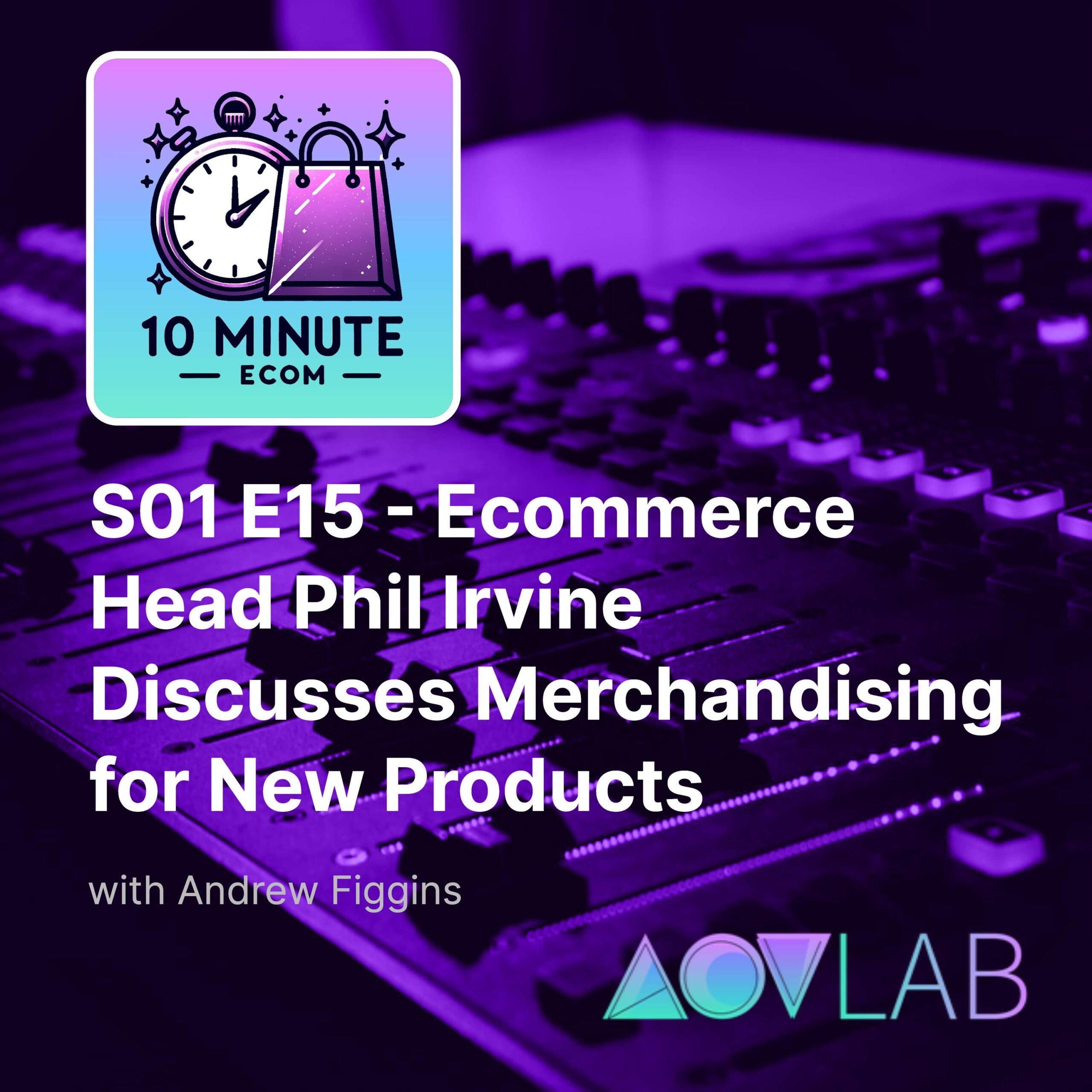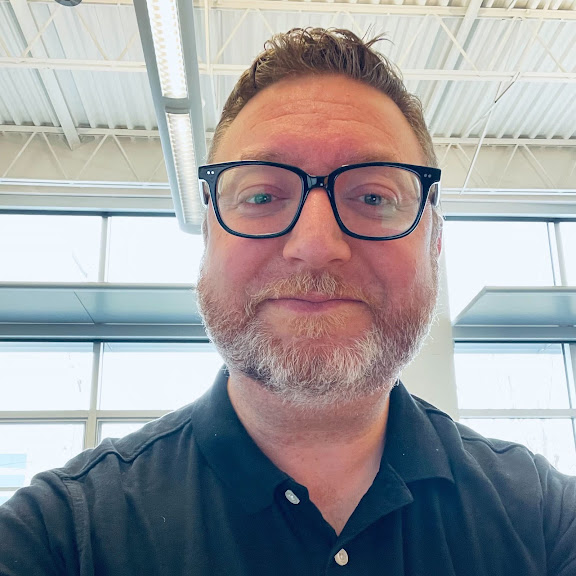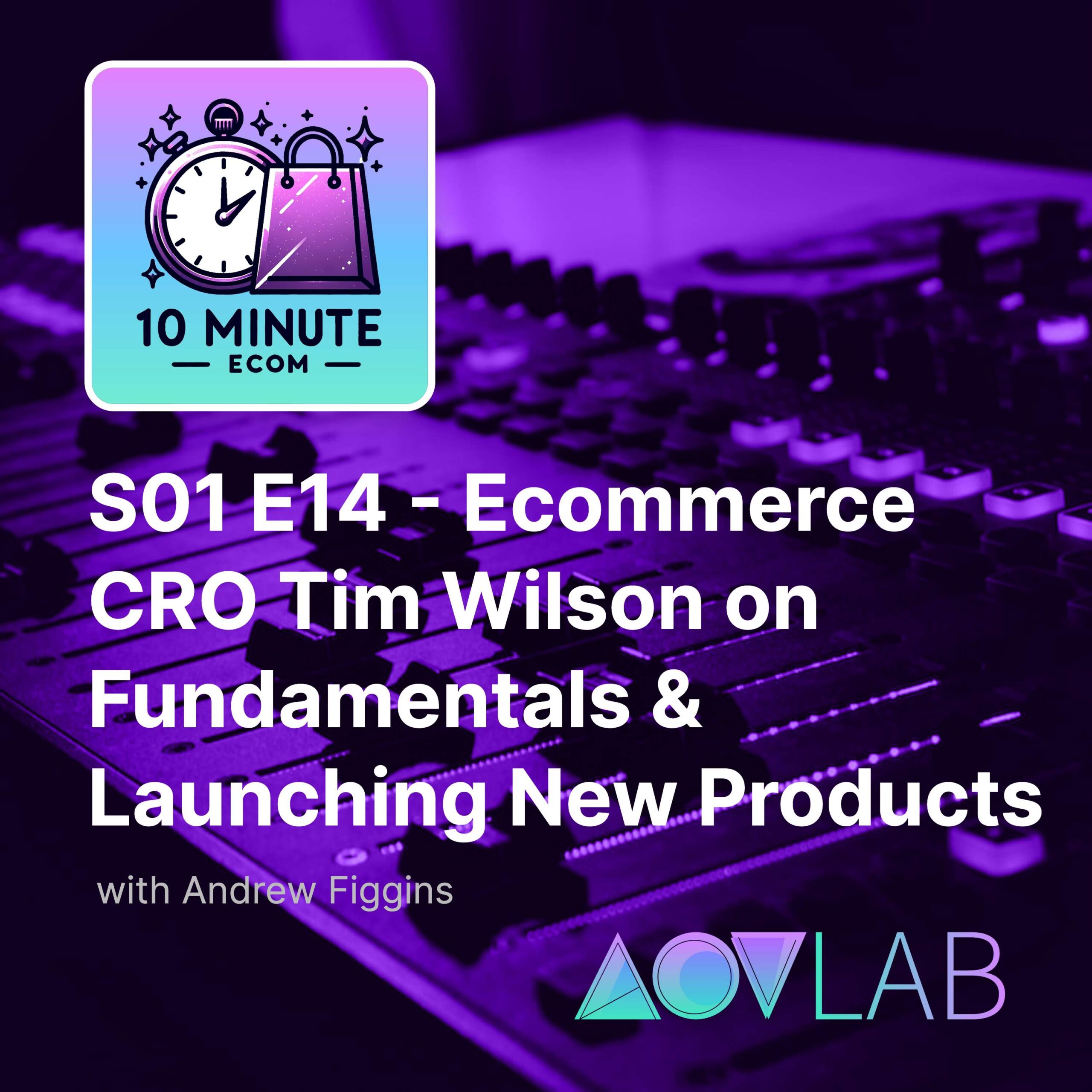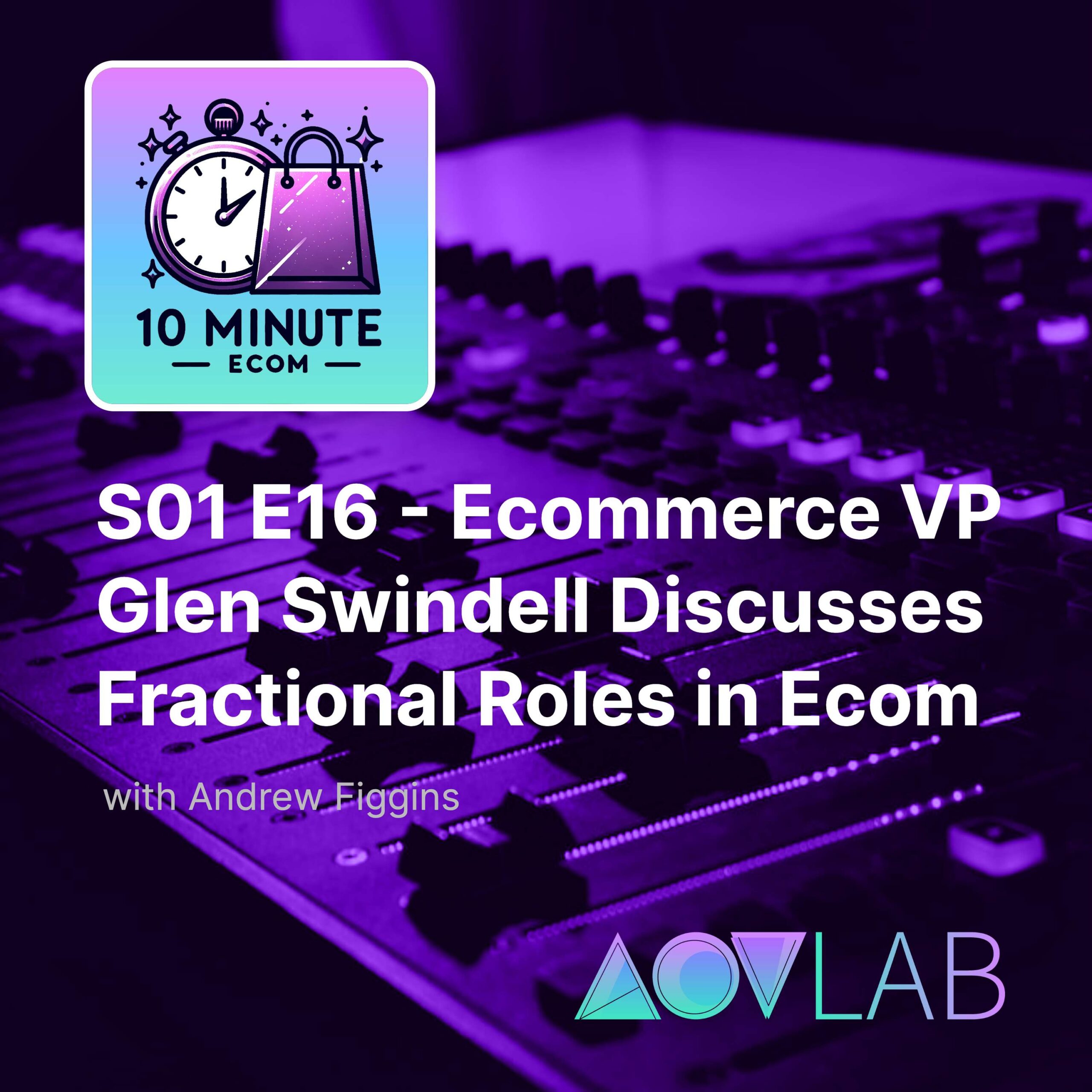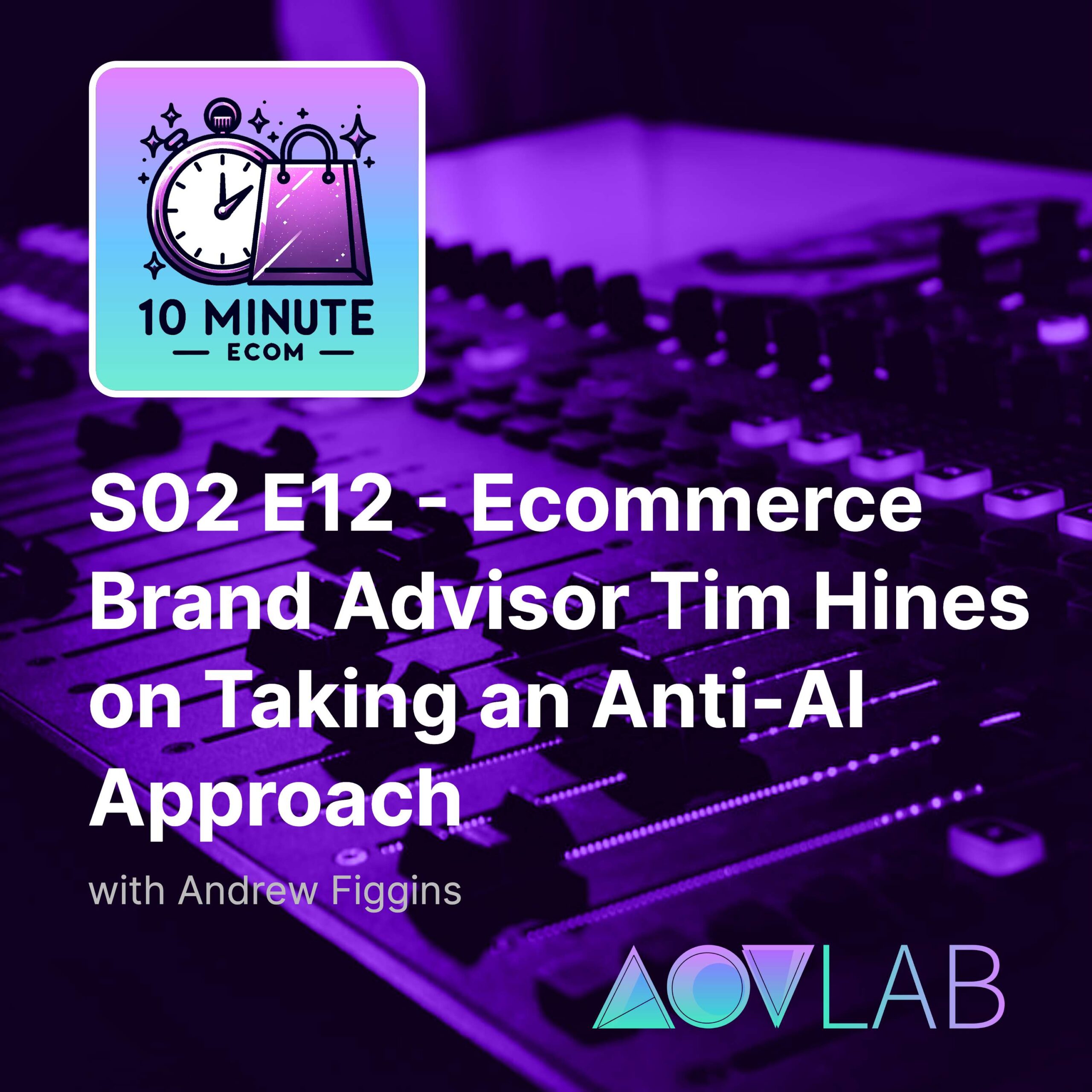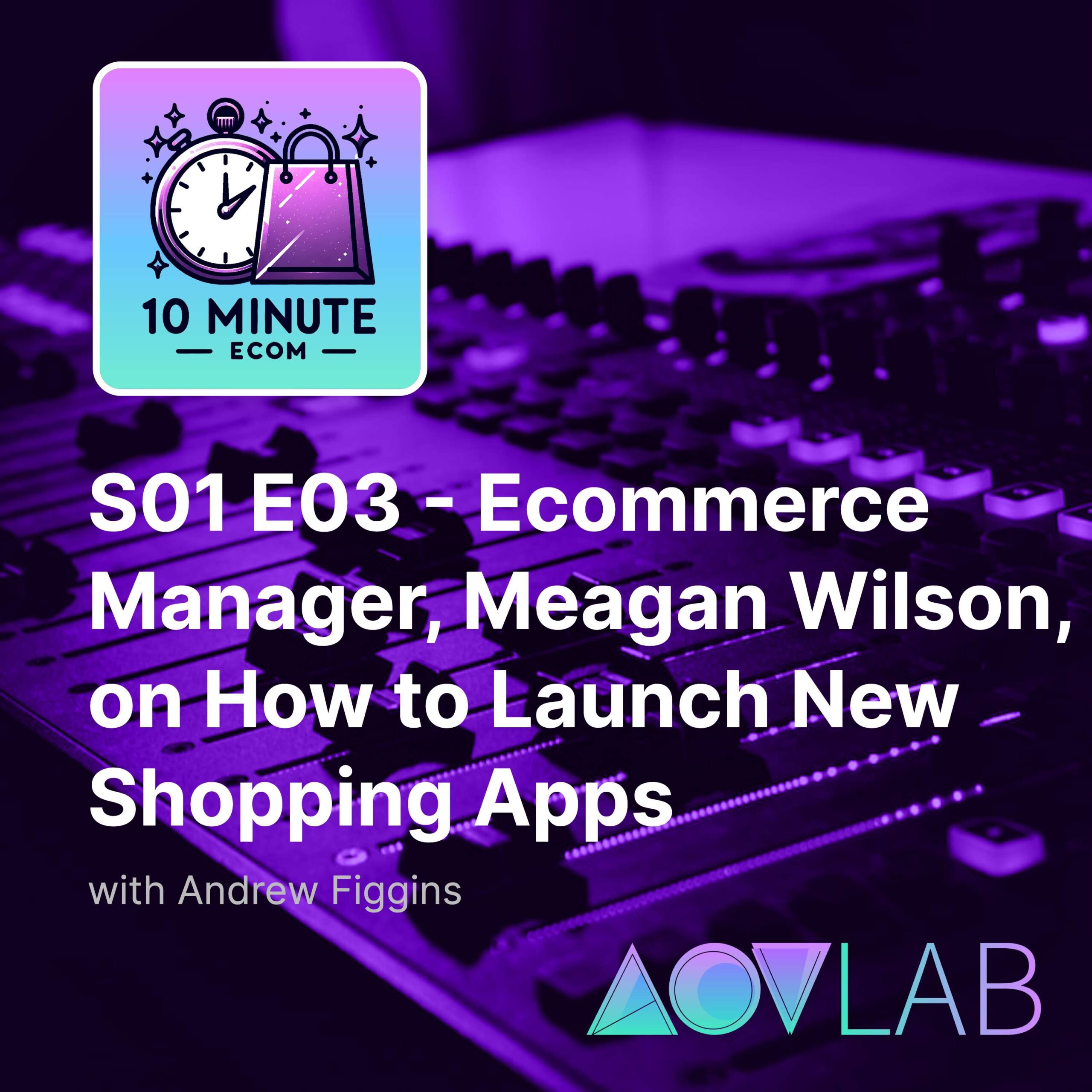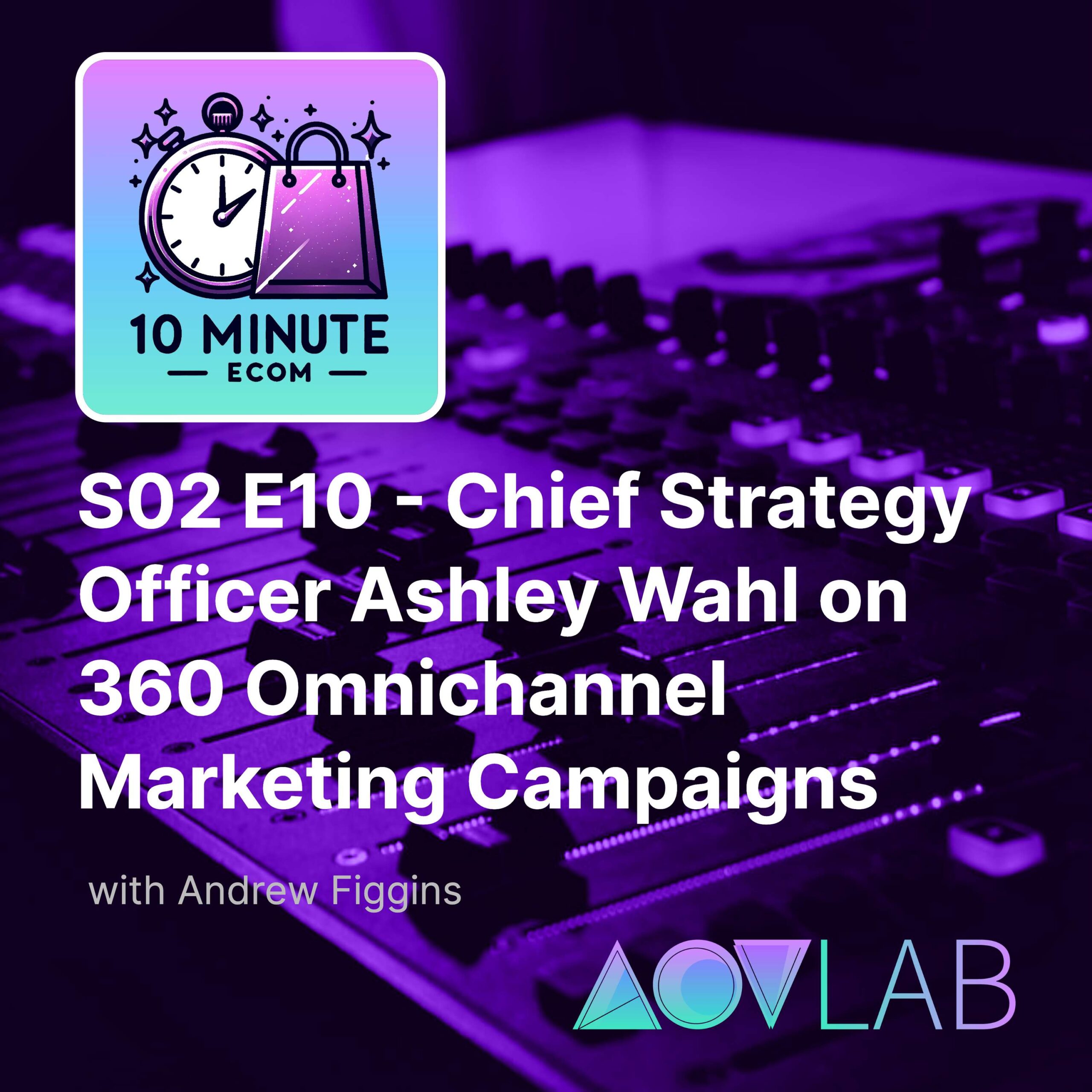Guest: Phil Irvine, Ecommerce Head, MOJOHost: Andrew Figgins, Founder, AOV Lab Episode Synopsis:Phil discusses the case study for MXXN (pronounced “moon”), a new brand and set of products that he is leading the charge to merchandise and grow. Transcript: [00:00:15] Andrew: Hello Ecommerce fans, and welcome to 10-Minute Ecom, an AOV Lab podcast. Every episode, we break down a new and different tactic that can help you improve your ecommerce KPIs (key performance indicators). I’m your host, Andrew Figgins, and like most of you, I am an e commerce professional. You may know me as the founder of AOV Lab, the […]
View Full Transcript
Episode Transcript
[00:00:10] Speaker A: Hello, ecommerce fans, and welcome to ten minute Ecom, an AOV Lab podcast. Every episode, we break down a new and different tactic that can help you improve your ecommerce KPIs key performance indicators. I'm your host, Andrew Figgins, and like most of you, I am an ecommerce professional. You may know me as the founder of AOV Lab, the former vp of digital product innovation at scrubs and beyond, or the former director of e commerce technology at Rural King. Today I'm excited to be talking to Phil Irvine, an e commerce colleague that is doing very interesting work in e commerce. Anyway, Phil, what did you come on the show to share today? The ecommerce colleagues.
[00:00:48] Speaker B: Hi, my name is Phil Irvine. I'm from a company called Mojo. We're a digital operating partner with a focus on digital and creative strategy. And I am based out of Sherman Oaks, California. And so one thing I've seen in e comm that has a direct impact on the health from a revenue and profitability standpoint for a business is thinking about your digital product merchandising strategy.
[00:01:14] Speaker A: Thank you, Phil.
[00:01:15] Speaker C: After the ad, we'll get right into the chat.
[00:01:18] Speaker D: Today's episode of ten minute Ecom is brought to you by Shopbox AI. I've evaluated hundreds of ecommerce technologies in.
[00:01:25] Speaker C: The last two years, and Shopbox is.
[00:01:28] Speaker D: At the very top of my list. They're an award winning irish team full.
[00:01:31] Speaker C: Of innovators that figured out a way.
[00:01:33] Speaker D: To help e comm brands build a store around every customer, which results in five times longer site sessions. That's not a typo or an ad read mistakeo.
AOV Lab is helping Shopbox break into the north american ecommerce retail market, and we're happy to arrange an intro and demo so you can see exactly how their addon technology works. To deliver outsized results, go to Aov Lab.com and click on vendor network to set up your 30 minutes discovery call with Shopbox. And now back to the show.
[00:02:08] Speaker C: Excellent, Phil. And I'm so excited that you're here today on ten minute ecom. Can't wait to get into this tactic and topic with you today. Tell me a little bit about merchandising strategy for a product that's brand new. We were just chatting right before we started recording today about a product that you're introducing to market and just the challenges that come with introducing a brand new SKU.
[00:02:33] Speaker B: Yeah, definitely. The brand that we'll focus on here today is called Moon. It's spelled actually MXN. And incidentally, we only have four skus. So you wouldn't think that a merchandising strategy could really have an impact on a business. But for some context, it's a non alcoholic spirit that has cannabis. So it's a newer non alcoholic spirit in the market. We have three main flavors, a tequila, a gin and a bourbon, and we call them our flagship skus. They're 750 ML, so larger bottles. But over time, as we approached our launch, we thought it would be a value add to have a sampler pack. So basically a sample of each of those three flavors at a much smaller size, at a much lower price point. So a price point of $35 versus $80 for the flagship products. And the initial hypothesis was that because it's a new product, it's completely new in the marketplace, we thought that a lot of people would want to sample the product first and get a feel for which flavor they would like before they made the investment in a bigger dollar in a bigger bottle. So that was the main impetus for coming to market with a sampler pack as we started to launch nationwide.
[00:03:53] Speaker C: Got you, and you found through doing that. It sounds like that maybe the initial thoughts that you all had about creating that sampler pack, they didn't necessarily meet the customer expectations. Is that right?
[00:04:09] Speaker B: I think what was interesting is over the first two to three months of launch, 60% of our sales were actually from the sampler pack. And our hypothesis was validated. A lot of people, as they got to our site, as they saw some of our ads, they did want to just sample the product before investing in one of our bigger bottles. What happened though, is we're still sorting out having consistent inventory available for our consumers. From a DTC standpoint and also from a wholesale standpoint, it's just by the nature of driving sales. We actually ran out of stock of the sampler product. And we were really concerned because we thought not having this lower price point product as part of our portfolio would greatly impact our cost to acquire customers. Essentially, we were running meta ads a little bit with Google, we tested a little bit with display advertising, and we just had this huge fear. And when the sampler pack went out of stock, we actually did see our cost per new customer acquisition cost spike from about seventy two dollars to one hundred dollars. And if you compare that to our average order value of about 110, it wasn't really an ideal mix for a period of time. It was driving sales. But we also found that the repeat purchase rates of people who bought that sampler versus the main flagship products was much lower. Almost 50% less for those people that initially acquired the sampler pack. So that was the key nugget and alerting that we didn't necessarily have to lean so hard into pushing that sampler pack, because in the long term, we found that those people weren't necessarily coming back to purchase again as frequently.
[00:06:01] Speaker C: Very good. And I think it's great that you were able to discover that early on. I think a lot of companies discover something similar to that, but maybe the product's been out in the market for a couple of years and it can be a real challenge to make that shift or that pivot. So that's really cool. I think that you guys figured that out to ask you though, because it's such a unique product, and we're talking about the difference between almost like a shot version, I think, of this, in the sampler pack, versus the full bottle, the 750. Wanted to ask you, though, what has some of the customer feedback been, whether through the sampler pack or through just the normal regular purchases? What are you hearing from some customers that are tasting your product for the first time?
[00:06:48] Speaker B: Yeah, and I'll preface this by saying we're still fairly small. We're not spending more than maybe 20,000 a month in media and ad spend. Still a small sample size, but overwhelmingly, I'd say 95% of the feedback is overwhelmingly positive. With people that have tried the product, we're getting a lot of great feedback from either those that completely abstained from alcohol, and they see this as a perfect replacement and complement. And then there's a variety of customer segments that we're going after. But for some people, like myself, I still do drink alcohol somewhat periodically, but if I want to take a break for a couple of days, it's a great substitute. And the quality of the taste of the cocktails has been something that our customer base has responded very favorably towards. So I think that's been a great thing. As with any new business, though, there's so much more that we can do.
People want a subscription product of some sort. People want more flavors. We only have three flavors right now. To this point, it's been very positive, but there's definitely a lot more that we can do to really help scale this brand.
[00:07:58] Speaker C: Absolutely. Have you all done any kind of like a vet based marketing or anything like that? Have you gone out to some either trade shows or things like concert venues to either get the name out there or to offer samples or any of the above?
[00:08:16] Speaker B: Yeah, I'm the head of direct to consumer for the Moon brand. I have a peer who's actually the head of wholesale retail and wholesale. And so the other distribution channel that we have is primarily through dispensaries. Right? Have he's focused on developing those relationships with different dispensaries. We're mostly in California, but expanding out to other locations. We offer these locations samples, and then they can buy our products in bulk at a lower wholesale price. It's funny you mentioned events, because we have done a couple of events. We did recently have a big collaboration with a company called Wanna Brands in Las Vegas. I should know the name of the conference, but it was a very big cannabis focused conference for a lot of leaders in the space, and we collaborated on a huge, sweet party at the cosmopolitan there, and it was a huge success. And we increased our email list size, increased a lot of mentions through social media and whatnot. But it's funny you mentioned that, because that's definitely a huge part of how we've seen we can scale this brand a lot in 2024.
[00:09:26] Speaker C: Do you all have some difficult regulatory challenges and hoops that you have to jump through as well, just with the product being what it is?
[00:09:36] Speaker B: Yeah, definitely a couple. So, number one, we're still only available in 38 states in the United States right now, just because of some states still have restrictions, even though we have a hemp formulation as opposed to cannabis. So that's one regulation. There's restrictions with certain types of advertising. We would love to get this on Amazon, but I think with Amazon you can only sell, like, merchandising related to cannabis. So that's been a challenge. And then on a wholesale side, it's interesting, there's some states where we're restricted from selling our full 750 milliliter bottle. Like, you can only sell cannabis related drinks in smaller portions. So it's frustrating because we're getting a lot of demand from a lot of states and establishments, but we have rethinked the packaging and the structure of our product to be able to meet that demand. I'm just scratching the surface, but those are some of the two main challenges that are top of mind right now.
[00:10:38] Speaker C: Cool. Yeah. And you mentioned digital merchandising, and that aspect of it being something around the tactic or the topic for today's episode. And that sounds like a huge challenge with a new product like this, and you're facing some regulatory things, trying to get the name out there.
How do you look at product development in terms of where to go next? You're probably getting, like we just talked about, you're getting a lot of feedback from customers early on.
How do you put together your strategy for how to merchandise the product? Is it based on some of the feedback that you're getting from customers?
[00:11:18] Speaker B: Yeah, I think it's not to give you like a classic management consultant answer, but it's probably a triangulation of three data points. It's customer feedback, it's market research, and then it's also an analysis of just trends we've been seeing with customer purchase behaviors. So I think, again, it's only four skus, but I think we have a lot of ideas with not just the sampler pack, but we're going to be launching a new cocktail kit in the near future, which is a version of the sampler pack, but it also comes with three mixers that you can just mix straight with the moon product to make your cocktail within the package that you get. And I think a big thing, I mentioned subscriptions, but I think another big thing is we do still think there's a place for this lower price sampler pack, whether it's maybe we use it as a promotion. If you buy a 750 milliliter, you can maybe get a sampler pack for free or at a discounted price. We see it more as a lever to increase our basket size, maybe use it for gifting purposes, or like I mentioned, or maybe a one off promotion of some sort. So I think there's a lot of thoughts that we're thinking through right now. But just the last thing I'll mention too is definitely more flavors. I won't give too much information, but we have a new flavor that's going to be coming to market soon that we're really excited about right now.
[00:12:43] Speaker C: That's very cool. It's neat to think about those sampler packs because you mentioned, I think before that the aov average was about $110. So in my head, when you said that, I was like, okay, that's probably the 750 milliliter plus the sampler pack. But I think what's interesting about it is if it is that add on product that puts the customer over $100, maybe it's the thing or something that can help turn that one customer into three customers or four customers because they might be sharing it with some of their friends, taking it to a party, taking it to an event, et cetera.
[00:13:20] Speaker B: Yeah, no, that's a good thought. Yeah. What was so interesting when we ran out of the sampler pack, we just didn't have it available to even sell our. Initially, our CAC numbers spiked because naturally they're going to have to spend more money to get people to buy more higher priced products. But we settled into an area now where our aov increased from 110 to now we're at about 140 as an aov, and our CAC is actually down to 65. There are a lot of other optimizations. Our spend levels are reduced, so those are factors. So we have a much better aov to CAC ratio without the sampler pack. So that was just another interesting observation. But I think our hypothesis is that the people that we're getting to repeat buy, they're getting a bigger portion to try and really enjoy, or they're maybe using it for party purposes, sharing it with friends, seeing how those can lead to just great moments and experiences and then that's incentivizing them to repeat purchase again. But yeah, a lot of hypothesis that we have and just thoughts based off anecdotal evidence, but that's where our heads at right now.
[00:14:32] Speaker C: Got you. Are you all using any particular kind of tools in terms of doing your analysis of sales numbers and trying to use some of the early metrics that you're seeing? Are you using things like Google Analytics or other programs or other tools to analyze things?
[00:14:53] Speaker B: Yeah, being a scrappy startup, we're not too sophisticated. Our commerce for our ecommerce platform. Clavio. For email marketing, yes or yes. Google Analytics for all the website analytics traffic and all that. A tool that. It's funny because I've worked in this space for 15 years and through a peer of mine I heard about a tool called Databox, which is a data visualization tool to connect all of your other martech and ad technologies into a centralized location. It's similar to Adelmo or tableau, but Databox has really been solid with helping us to spin up really clean and easy views to understand how we're trending with key KPIs outside of just sales and profit. Things like Cap that I mentioned, aov, what's the volume of sales by SKU, site conversion rate and things of that nature. So it's really been for smaller companies that are a little hamstrung with budget. I definitely recommend Netsool as to look at.
[00:15:58] Speaker C: Very cool, Phil. It is ten minute ecom and so unfortunately the time comes and goes really quick. I wanted to thank you for joining the show today and also ask you, before we head out, is there anything else you'd like to share with your colleagues in ecommerce today?
[00:16:17] Speaker B: Yeah, I would say it's again, coming from a startup environment, there's always alternatives to get things done versus what's taken up the airspace in the market. Like you'll see a lot of these email providers or analytics tools that their starting points for pricing might be like twenty k a month. But even though they're taking up all the airspace, there's always other ways to get stuff done. And I would just say I've heard some of your previous guests simply say just YouTube certain topics and teach yourself how to get things done. I would just have that type of mindset if you're in this scrappy mode, that there's always ways to get things done in different manners than what's just popular or trendy.
[00:16:59] Speaker C: Absolutely. It sounds the future of Moon is bright. I would be excited to talk to you maybe six months or a year from now just to see your growth story and how this brand takes shape over the next six to twelve months. I think it's pretty cool. So thanks so much again Phil, for coming on the show today.
[00:17:18] Speaker B: Definitely. And thanks for having me for sure.
[00:17:22] Speaker A: Well, we've hit that ten minute mark.
[00:17:24] Speaker C: So that's a wrap for today's episode.
[00:17:26] Speaker A: I want to again thank our guest Phil Irvine. Bear with me today. I have a very lengthy list of.
[00:17:31] Speaker C: Ways that you can support the show.
[00:17:33] Speaker A: If you have a moment, be sure to subscribe like or follow the show on Apple Podcasts, Spotify, Amazon Music, Google Podcasts, or wherever it is that you listen. You can also rate and review the show inside your favorite podcast app. Also, you can go to aov lablab.com and check out more episodes of the show, as well as our vendor network. If you can spare a half hour to take a demo of any of our sponsors, it'll be worth your time. I've hand selected a set of peer tested, proven technologies, including optiversal, constructor, ecommerce, as well espresso and Shopbox AI, who we are helping to introduce to us based retail and e commerce brands and professionals. I hope you enjoyed this episode of the show. Until next time, this is Andrew Figgins signing off and saying have a good one.
